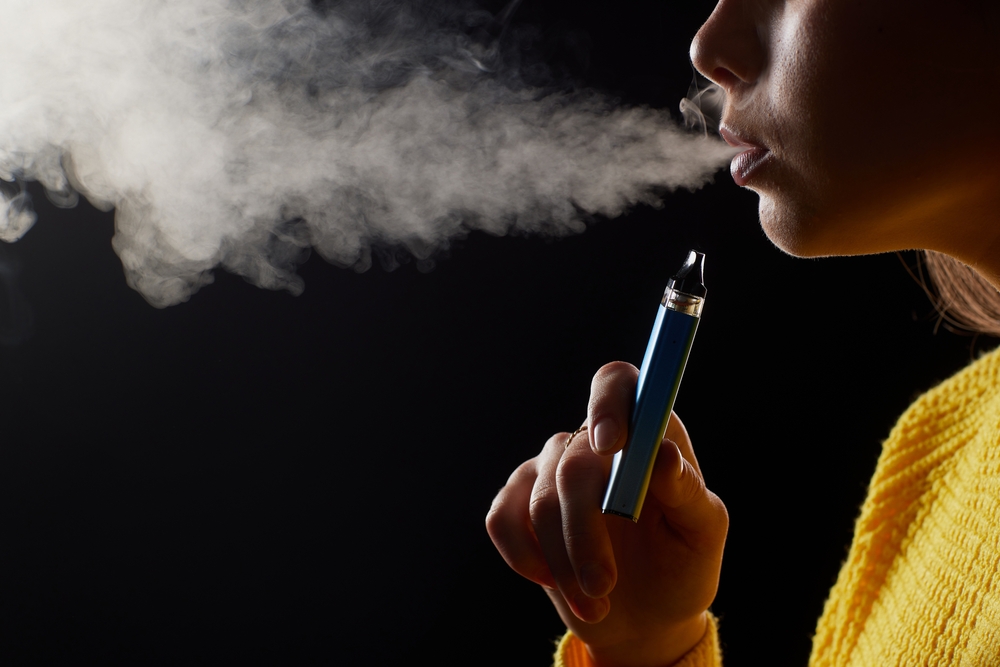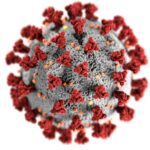Horrifying Simulation Shows What Happens to Your Body When You Vape

Let’s be real—vaping wasn’t supposed to be the villain. It came in like a smooth talker, whispering promises of a “safer” high, a cleaner alternative to cigarettes. Sleek, trendy, and packed with flavors that made smoke clouds taste like candy. But here’s the catch—just because something smells sweet doesn’t mean it won’t poison you.
For years, the truth hid in the shadows, buried beneath marketing tactics and flavored distractions. But now, science is pulling back the curtain, and what it reveals is straight-up chilling. A recent simulation has exposed what really happens inside your body when you take that inhale—and trust me, it’s not pretty. We’re talking mucus buildup, lung damage, and a system so wrecked it can take weeks to recover from just a single hit.
So before you take another puff, ask yourself—do you really know what’s going on inside your body? Because this simulation just made it impossible to ignore.
The Rise of Vaping and Its Unknown Long-Term Risks

Vaping didn’t just happen—it took over. In less than a decade, it went from a niche alternative to a full-blown cultural phenomenon. The flavors, the sleek designs, the social media trends—it was the cool new thing, a ticket to a buzz without the baggage of traditional cigarettes. And for millions, especially teens and young adults, it became a daily habit.
But here’s the problem: just because we don’t see the damage right away doesn’t mean it isn’t happening. Studies are still catching up, but the early evidence? It’s not looking good. The Centers for Disease Control and Prevention (CDC) found that in 2023 alone, nearly 2.13 million middle and high school students in the U.S. admitted to vaping. And these aren’t just casual users—many are hooked, puffing away on what they think is harmless vapor, unaware that every inhale could be setting them up for lifelong health problems.
The truth? Vaping isn’t some innocent alternative—it’s a game of Russian roulette with chemicals we barely understand. And the longer we wait for the “official” long-term data, the more bodies pile up, the more lungs collapse, and the more lives get rewired by addiction.
The Shocking Simulation – What Happens Inside Your Lungs
You take a hit. The vapor rushes in, smooth and flavored, masking the reality of what’s happening inside. A recent simulation exposed the truth—chemicals flood your lungs, coating them in a thick layer of mucus. The alveoli, tiny air sacs responsible for oxygen exchange, get smothered, making it harder for your body to breathe.
Then, the cilia—those microscopic hair-like structures that clear out toxins—become paralyzed. With your body’s defense system shut down, harmful particles and bacteria settle in, increasing the risk of infections and long-term damage. And here’s the kicker: it can take weeks for your lungs to even begin recovering from just a single session.
For those who vape regularly, the damage isn’t just temporary—it’s compounding. Day by day, inhale by inhale, the lungs weaken, setting the stage for chronic disease. The simulation makes one thing clear: vaping doesn’t just pass through your body. It leaves a mark, and not the kind you can ignore.
What You Are Really Inhaling When You Vape

For years, vaping has been marketed as a cleaner, safer alternative to smoking. No tar, no tobacco—just flavored vapor. But here’s the reality: what’s being inhaled isn’t harmless mist. It’s a cloud laced with ultrafine particles, heavy metals, and toxic chemicals—many of which are also found in industrial cleaners, pesticides, and car exhaust. The idea that vaping is “just flavored water vapor” is one of the biggest deceptions in modern marketing.
One of the most dangerous ingredients in e-cigarettes is nicotine, a substance that doesn’t just create addiction—it alters brain chemistry. Studies show that nicotine can increase heart rate, elevate blood pressure, and trigger the release of stress hormones, putting unnecessary strain on the cardiovascular system. Even in vape juices labeled “nicotine-free,” tests have found traces of the substance, meaning that many users are unknowingly getting hooked.
But nicotine isn’t the only concern. Many vape liquids contain diacetyl, a chemical known to cause a severe lung disease called bronchiolitis obliterans—better known as “popcorn lung.” This condition scars the airways, making it difficult to breathe, and once the damage is done, it’s irreversible. Then there’s formaldehyde, a known carcinogen that forms when vape liquids are heated at high temperatures, exposing users to the same toxic compounds found in cigarette smoke.
The scariest part? These effects aren’t always immediate. Unlike traditional smoking, where the consequences often take years to manifest, vaping damage can start silently, accumulating over time. People inhale, feel fine, and assume all is well—until one day, their lungs tell a different story.
The Addiction Trap – How Vaping Hooks You Without You Realizing

Nobody picks up a vape thinking, This will control me. It starts as a casual habit—just a puff here and there, maybe to fit in, maybe to relieve stress. But what most people don’t realize is that vaping isn’t just a habit; it’s a carefully engineered addiction. And by the time you feel its grip, breaking free can feel almost impossible. Nicotine is one of the most addictive substances on the planet, and vapes are designed to deliver it in a way that makes quitting even harder. Unlike traditional cigarettes, where nicotine absorption is slower, e-cigarettes use a process called nicotine salt technology, which allows the body to absorb nicotine faster and in higher doses. This gives users an immediate buzz but also makes the brain crave more—rewiring its reward system, much like hard drugs do.
The effects are especially concerning for young people. Studies show that nicotine exposure in adolescence alters brain development, making it easier to develop addictions later in life—not just to nicotine, but to other substances as well. It interferes with memory, attention, and impulse control, creating long-term consequences that go far beyond the vape pen.
Even those who start vaping with the intention of quitting cigarettes often find themselves trapped in a cycle. Many vapes contain higher nicotine levels than traditional cigarettes, leading to stronger dependence. And because vaping lacks the harsh burn of cigarette smoke, users tend to take deeper inhales and more frequent puffs—unknowingly increasing their exposure to harmful chemicals.
Real Stories – The People Behind the Data
Statistics can be sobering, but numbers alone don’t capture the full reality. Behind every study, every warning label, and every medical report, there are real people—individuals who once believed vaping was harmless, only to find themselves trapped in a nightmare they never saw coming. One such case is Ewan Fisher, a teenager from the UK who nearly lost his life to vaping. At just 16 years old, he developed a severe lung condition that landed him in intensive care. His lungs became so inflamed that he required life support to survive. Doctors described his condition as resembling a near-fatal pneumonia, a level of damage they hadn’t expected in someone so young. His story is not an isolated incident. Across the world, countless young people have been hospitalized with vaping-related lung injuries, many of them unaware that the devices they thought were safe could turn their own bodies into battlegrounds.
Then there’s the growing crisis of EVALI (E-cigarette or Vaping Use-Associated Lung Injury), a condition that has led to thousands of hospitalizations and multiple deaths since it was first identified in 2019. Many of the victims were young, healthy individuals who had no history of lung disease—until vaping triggered a sudden collapse of their respiratory system. Doctors have linked many of these cases to harmful additives found in vape liquids, substances that were never meant to be inhaled. In some cases, lungs became so damaged that patients needed ventilators just to breathe. For others, the damage was permanent—scarred lung tissue, decreased lung capacity, and chronic shortness of breath, all from a habit they initially believed was harmless.
And the damage doesn’t always strike overnight. Many former vapers now struggle with long-term respiratory issues, unable to perform simple activities like running or even walking up a flight of stairs without feeling winded. Some report persistent chest pain and a suffocating tightness in their lungs, a haunting reminder of choices they wish they could take back. The hardest part? Most of them say they never thought it would happen to them. They saw vaping as a harmless trend, something everyone was doing. But addiction doesn’t ask for permission, and damage doesn’t wait until you’re ready. These stories aren’t meant to scare—they’re meant to wake us up. Because for every person who realizes the danger before it’s too late, there’s another who wishes they had known sooner.
Breaking Free – What Can You Do?
The hardest part about quitting vaping isn’t just breaking a habit—it’s breaking a cycle that’s been designed to keep you hooked. Nicotine isn’t just a chemical; it’s a manipulator, rewiring your brain to crave it before you even realize what’s happening. But here’s the truth: no matter how strong the addiction feels, it does not define you. You have the power to take control, to reclaim your health, and to walk away from something that was never meant to serve you. It won’t be easy—withdrawal might feel like an uphill battle, and the urge to reach for your vape might not disappear overnight. But every step away from it is a step toward freedom.
If you want to quit, start by recognizing why you vape. Is it stress? Social pressure? Boredom? Identifying the triggers makes it easier to replace vaping with healthier alternatives. Small changes can make a big impact—chewing gum, exercising, deep breathing, or even just keeping your hands busy can help break the physical habit. And don’t be afraid to seek support. There are countless resources available, from nicotine replacement therapies to support groups and quit-smoking apps designed specifically for vapers. The key is to have a plan, to replace the urge with something meaningful, and to remind yourself why you’re doing this in the first place.
Most importantly, be patient with yourself. Breaking free from addiction isn’t about perfection—it’s about persistence. There might be moments of weakness, days where you slip up, but that doesn’t mean you’ve failed. What matters is that you keep moving forward. Because the more distance you put between yourself and vaping, the clearer you’ll see the truth: you never needed it. Your body was always meant to thrive without it. And every time you say no, you’re not just quitting a habit—you’re choosing a future where you’re in control.
Featured Image Source: Shutterstock
Source:
- Blount, B. C., Karwowski, M. P., Morel-Espinosa, M., Rees, J., Sosnoff, C., Cowan, E., Gardner, M., Wang, L., Valentin-Blasini, L., Silva, L., De Jesús, V. R., Kuklenyik, Z., Watson, C., Seyler, T., Xia, B., Chambers, D., Briss, P., King, B. A., Delaney, L., . . . Pirkle, J. L. (2019b). Evaluation of Bronchoalveolar Lavage Fluid from Patients in an Outbreak of E-cigarette, or Vaping, Product Use–Associated Lung Injury — 10 States, August–October 2019. MMWR Morbidity and Mortality Weekly Report, 68(45), 1040–1041. https://doi.org/10.15585/mmwr.mm6845e2
- Fedan, J., Dowdy, J., Fedan, K., & Hubbs, A. (2006). Popcorn worker’s lung: In vitro exposure to diacetyl, an ingredient in microwave popcorn butter flavoring, increases reactivity to methacholine☆. Toxicology and Applied Pharmacology, 215(1), 17–22. https://doi.org/10.1016/j.taap.2006.02.001
- Siegel, D. A., Jatlaoui, T. C., Koumans, E. H., Kiernan, E. A., Layer, M., Cates, J. E., Kimball, A., Weissman, D. N., Petersen, E. E., Reagan-Steiner, S., Godfred-Cato, S., Moulia, D., Moritz, E., Lehnert, J. D., Mitchko, J., London, J., Zaki, S. R., King, B. A., Jones, C. M., . . . Smalley, R. (2019). Update: Interim Guidance for Health Care Providers Evaluating and Caring for Patients with Suspected E-cigarette, or Vaping, Product Use Associated Lung Injury — United States, October 2019. MMWR Morbidity and Mortality Weekly Report, 68(41), 919–927. https://doi.org/10.15585/mmwr.mm6841e3
Loading...
Related Content
 When Science Shows Our Bones Can Rise Again
When Science Shows Our Bones Can Rise AgainBy Prince Ea





